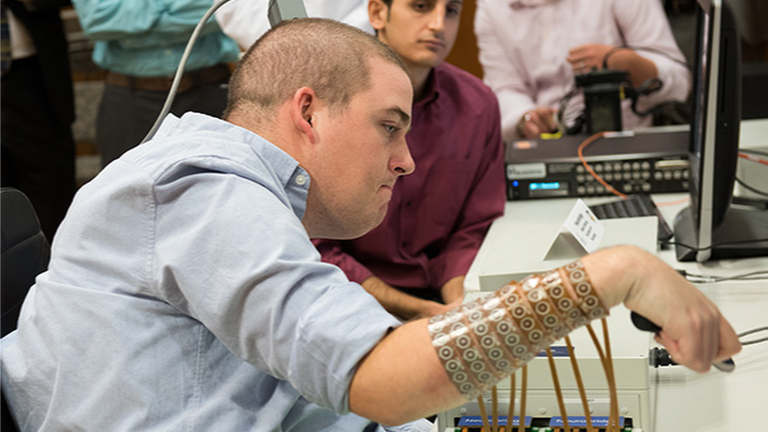Manual mobility of a patient with tetraplegia recovered

For the first time in humans with paralysis, it has been possible to recover the mobility of the different fingers, hand and wrist, collecting the signals of the cerebral surface of the patient. The achievement has been published in the journal Nature.
People with paralysis have cuts in the signaling pathways between the brain and muscles that prevent moving parts of the body. It has already been possible to capture the activity of the human nerves and move the robotic arms, but never the patient's own arm. On this occasion, however, the movement of the parts of the human body has been achieved in real time.
For this purpose, a microelectrode matrix was implanted in the cerebral cortex to a young man who had been left tetraplegic after a car accident 6 years ago. They have used machine learning algorithms to decode brain activity and control muscle activation of the arm. With the help of a system of neuromuscular electrical stimulation placed in the arm, a young man who could no longer move arms or legs, has managed to perform various movements of the hand and wrist. You can grab, handle, and drop objects. He has also come to play the guitar.
This technology connects the brain and muscles of people with spinal cord injury so that they can mobilize the paralyzed limb thoughtfully and voluntarily. The device interprets the signals and thoughts of the brain and, without going through the spinal cord, connects directly with the electronic sleeve it has in the arm. In this way it stimulates the muscles of the arm and of the hand and realize a movement thought by the patient.
Researchers have recognized the need to further improve the microelectrode system, the electrical stimulation system, and the algorithms themselves. The electrodes implanted in the nervous system cause inflammation that can damage the neurons. As a result, the signal of neurons is losing throughout the months. The young tetraplegic, for example, has had the system implanted for 15 months, a period in which 60% of the registry points have been lost. Anyway, neuroprostatic technologies have the hope of improving the quality of life of patients with paralysis.
You can watch the video here:
Buletina
Bidali zure helbide elektronikoa eta jaso asteroko buletina zure sarrera-ontzian











